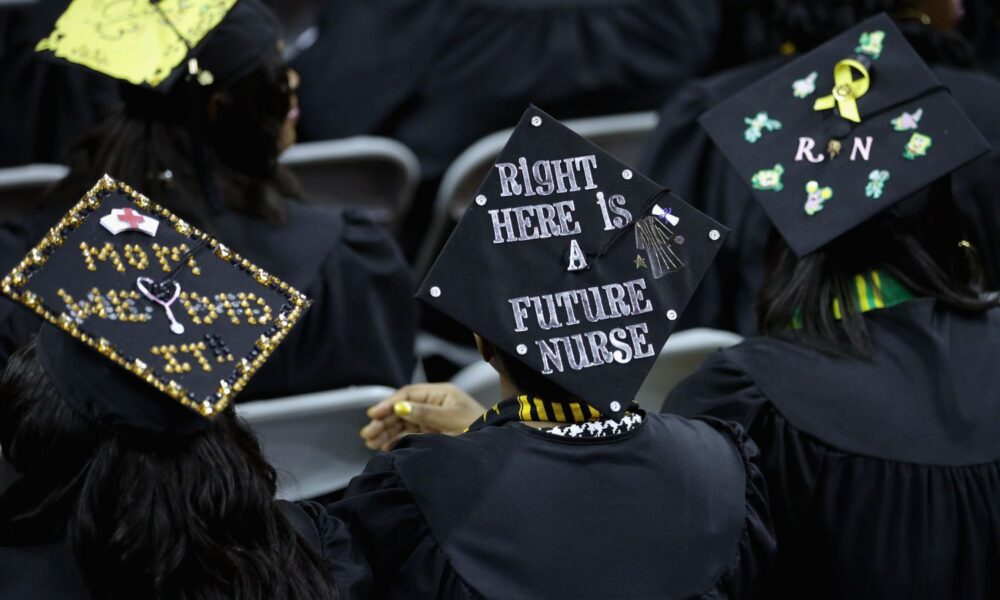The transformative power of higher education should not be underestimated. From groundbreaking research on the human genome that has helped to identify more effective cancer treatments, to real-world innovations that have reduced air pollution, universities and colleges are essential to a healthy, wealthy, and wise society. They are like the beating heart of progress, pumping lifeblood into making the world a better place for all. Today, however, this vital organ is under siege by a malignant disease. The Trump administration’s actions are jeopardizing not only schools and students, but the broader societal, economic, and environmental benefits they provide.
A multi-pronged assault
The threats to higher education are multifaceted. Budget cuts are just the initial assault. The administration’s attack on diversity, equity, and inclusion (DEI) programs, and its attempts to exert control over university curricula force schools to make an impossible choice: federal funding or academic freedom. This is not an abstract policy debate. It is a classic authoritarian tactic—as demonstrated recently by the Orbán government in Hungary—aimed at stifling free speech and eroding critical thinking.
Take Columbia University as a case study. The Trump administration has cut off grants, and imposed political conditions to even begin “negotiating” over their restoration. Coupled with the detention of Columbia student Mahmoud Khalil for participating in protests and ICE raids on student housing, the sense of safety and freedom that universities should be able to offer their students and staff has evaporated.
At the state level, Trump allies are acting as vectors of this same disease. In Florida, the hostile takeover of New College serves as a grim preview of political interference with curricula. In Texas, a bill has been introduced to create a politically appointed body to reshape university courses to fit an ideological agenda.
The ripple effects
The infection doesn’t stop at the campus gates. Collaboration between public, private, and academic research has long been a spur to a healthy economy and a vibrant society. Yet, funding cuts—such as the $800 million slashed from the Johns Hopkins University’s partnerships with USAID and NIH—paralyze real-world learning and information exchange. Our ability to develop new cures, prevent nuclear disasters, and protect natural resources are at risk.
Colleges and universities are often a major employer and driver of economic growth in their communities, and at their best they provide a path to opportunity for students from a variety of backgrounds and perspectives. The Trump administration’s proposed cuts to the US Department of Education and their aggressive investigation of DEI programs at 50 colleges will cut off pathways for students to attend college or graduate school and thrive there. We’re already seeing programming cancelled and offers to students rescinded in this climate of fear.
Attacks on research offices within federal agencies like NOAA, the EPA, NASA, and USDA—not to mention the Department of Education—are occurring through widespread layoffs, deletion of databases, and sidelining of science advisory committees. These actions threaten to sever arteries of opportunity by limiting access to systematically and transparently collected information. They also undermine US universities’ ability to offer a world-class education. We are leaving our students—the next generation of scientists and policymakers—stranded. It’s an attack on not just individual students, but our country’s ability to grow and thrive.
A call to action
The United States’ institutions of higher education, from ivied halls to community colleges, are a vital part of this country. At their best, they foster innovation and learning, support local economic development, and draw people from around the world to contribute their ideas and passions. The Trump administration’s actions threaten to squander this asset.
This assault would leave US academic institutions smaller, less diverse, more constrained in resources and perspectives, and less able to support students from different backgrounds. The effects will ripple out across the country: suppressing social mobility, weakening local economies, and damaging the long-term future of US scientific research.
Universities and colleges must act as their own immune system, defending their academic independence—and standing up when other institutions come under attack. Alongside them, the scientific community (inside and outside academia) must rally to support them in this fight. Alone, an individual university is outmatched by a hostile government. Working together, with the support of other parts of civil society, they’re stronger. Administrators can’t wait quietly for the eye of the Trump administration to fall on their institution: they need to draw a line now, to protect their students and faculty and defend their future.

